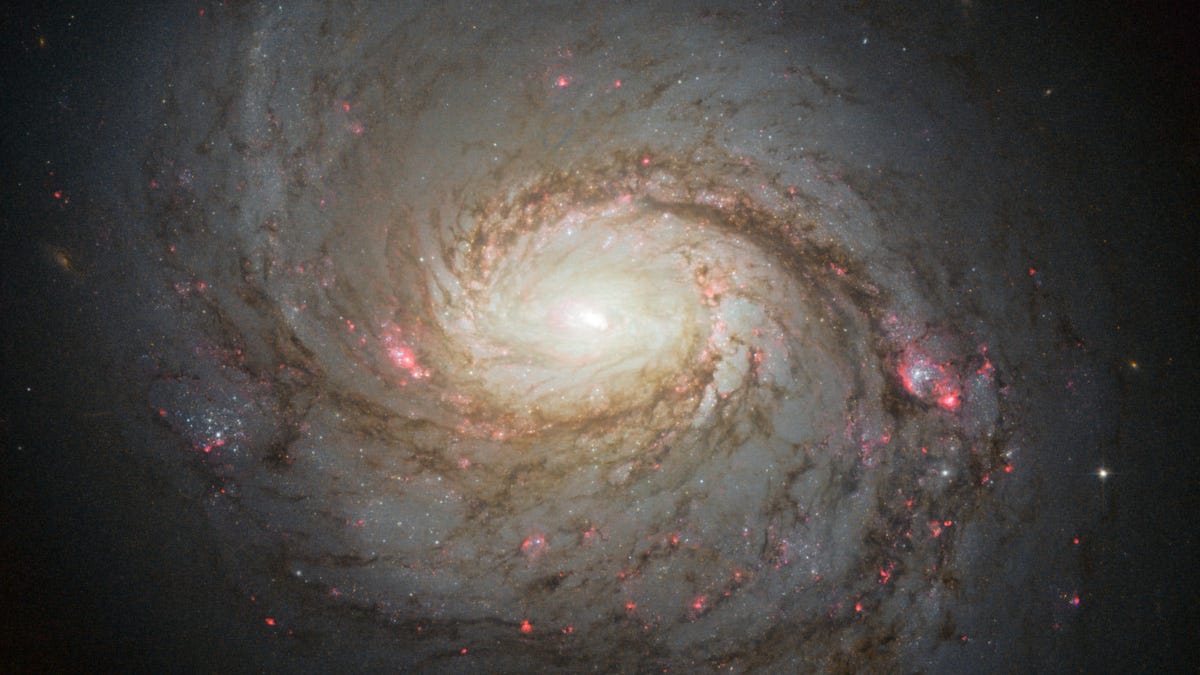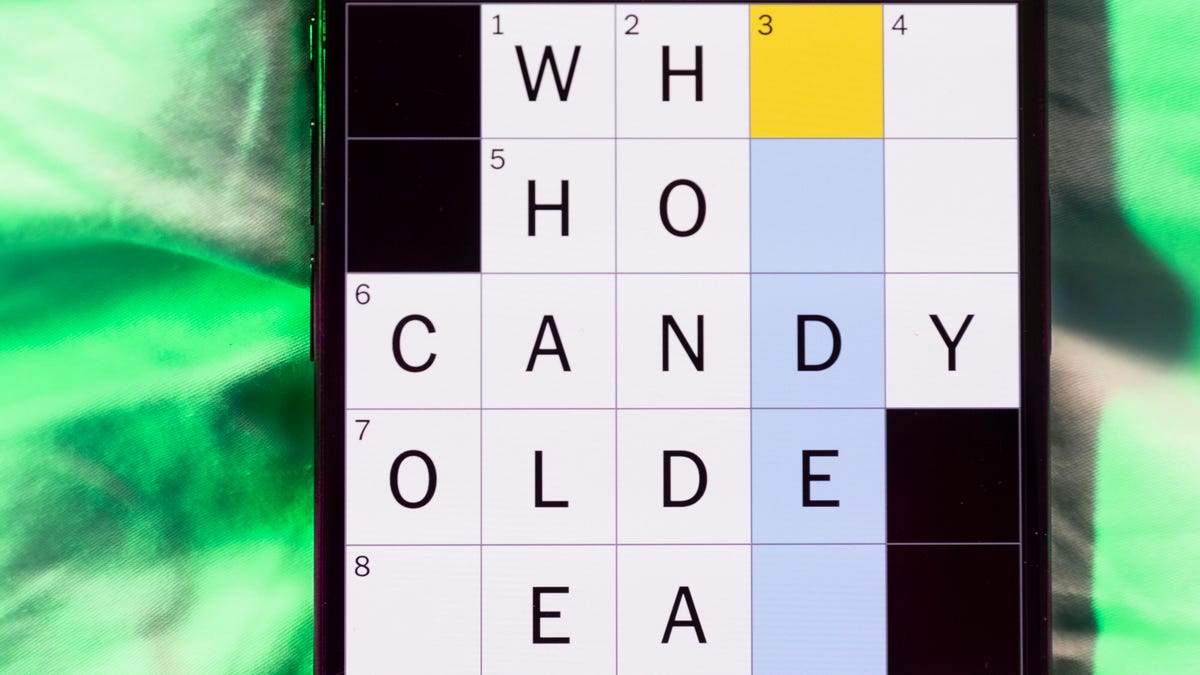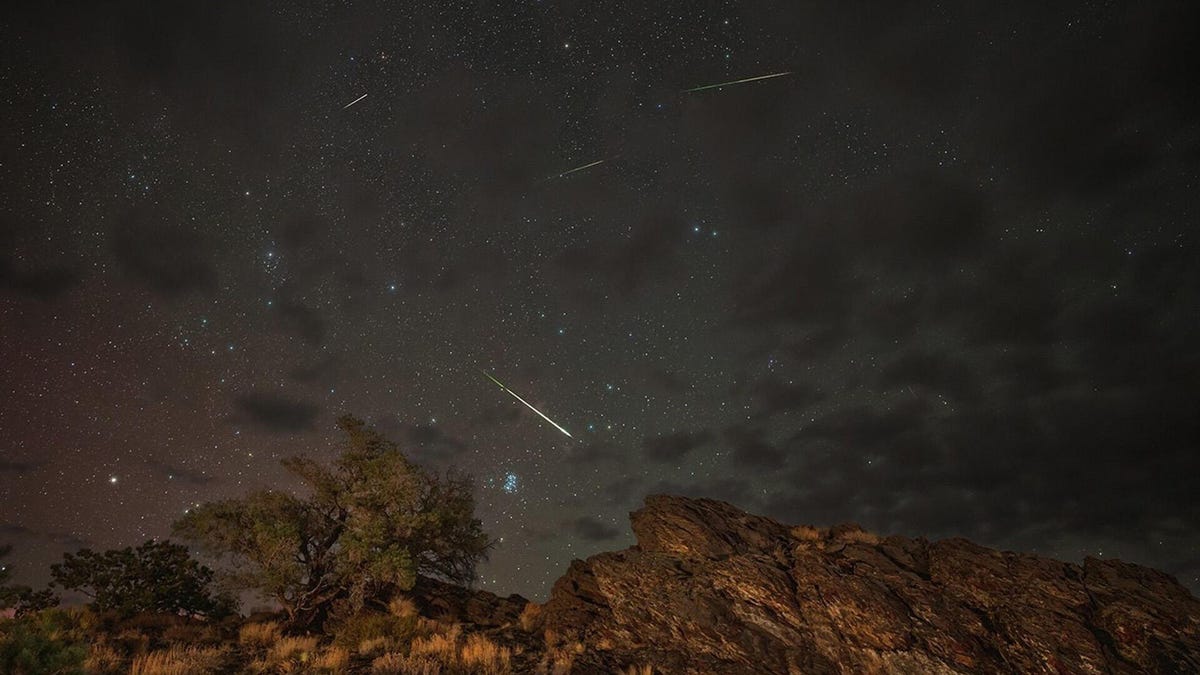Technologies
Why the Ghost Particles Crashing Into Antarctica Could Change Astronomy Forever
About 1.2 miles beneath Antarctica, an underground observatory is hunting for «ghost particles.» What it finds could reveal the unseen heart of a distant galaxy.

About 47 million light-years from where you’re sitting, the center of a black-hole-laden galaxy named NGC 1068 spits out streams of enigmatic particles. They’re neutrinos — otherwise known as the elusive «ghost particles» haunting our universe while leaving little trace of their existence.
Immediately after coming into being, bundles of these invisible bits plunge across the cosmic expanse. They whisk by bright stars we can see and zip past pockets of space teeming with marvels we’re yet to discover. They fly and fly and fly until, occasionally, they reach Earth’s South Pole and drill themselves underground. The neutrinos’ journey is seamless.
But scientists patiently wait for them to arrive.
Nestled into about 1 billion tons of ice, more than 2 kilometers (1.24 miles) beneath Antarctica, lies the IceCube Neutrino Observatory. A neutrino hunter, you might call it. And when any neutrinos transfer their party to the frigid continent, IceCube remains vigilant.
In a paper published Friday in the journal Science, the international team behind this ambitious experiment confirmed it has found evidence of 79 «high-energy neutrino emissions» coming from around where NGC 1068 is located, opening the door for novel — and endlessly fascinating — types of physics. «Neutrino astronomy,» scientists call it.
It’d be a branch of astronomy that can do what existing branches simply cannot.
Before today, physicists had only shown neutrinos coming from either the sun; our planet’s atmosphere; a chemical mechanism called radioactive decay; supernovas; and — thanks to IceCube’s first breakthrough in 2017 — a blazar, or voracious supermassive black hole pointed directly toward Earth. A void dubbed TXS 0506+056.
With this newfound neutrino source, we’re entering a new era of the particle’s story. In fact, according to the research team, it’s likely neutrinos stemming from NGC 1068 have up to millions, billions, maybe even trillions the amount of energy held by neutrinos rooted in the sun or supernovas. Those are jaw-dropping figures because, in general, such ghostly bits are so powerful, yet evasive, that every second, trillions upon trillions of neutrinos move right through your body. You just can’t tell.
And if you wanted to stop a neutrino in its tracks, you’d need to fight it with a block of lead one light-year-wide — though even then, there’d be a fractional chance of success. Thus, harnessing these particles, NCG 1068’s version or not, could allow us to penetrate areas of the cosmos that’d usually lie out of reach.
Now what?
Not only is this moment massive because it gives us more proof of a strange particle that wasn’t even announced to exist until 1956, but also because neutrinos are like keys to our universe’s backstage.
They hold the capacity to reveal phenomena and solve puzzles we’re unable to address by any other means, which is the primary reason scientists are trying to develop neutrino astronomy in the first place.
«The universe has multiple ways of communicating with us,» Denise Caldwell of the National Science Foundation and a member of the IceCube team, told reporters on Thursday. «Electromagnetic radiation, which we see as light from stars, gravitational waves that shake the fabric of space — and elementary particles, such as protons, neutrons and electrons spewed out by localized sources.
«One of these elementary particles has been neutrinos that permeate the universe, but unfortunately, neutrinos are very difficult to detect.»
In fact, even the galaxy NGC 1068 and its gargantuan black hole are typically obscured by a thick veil of dust and gas, making them hard to parse with standard optical telescopes and equipment — despite years of scientists trying to pierce its curtain. NASA’s James Webb Space Telescope could have a leg up in this case due to its infrared eyes, but neutrinos may be an even better way in.
Expected to be generated behind such opaque screens filtering our universe, these particles can carry cosmic information from behind those screens, zoom across great distances while interacting with essentially no other matter, and deliver pristine, untouched information to humanity about elusive corners of outer space.
«We are very lucky, in a sense, because we can access an amazing understanding of this object,» Elisa Resconi, of the Technical University of Munich and IceCube team member, said of NGC 1068.
It’s also notable that there are many (many) more galaxies similar to NGC 1068 — categorized as Seyfert galaxies — than there are blazars similar to TXS 0506+056. This means IceCube’s latest discovery is, arguably, a larger step forward for neutrino astronomers than the observatory’s seminal one.
Perhaps the bulk of neutrinos diffusing throughout the universe are rooted in NGC 1068 doppelgangers. But in the grand scheme of things, there’s far more to the merit of neutrinos than just their sources.
These ghosts, as Justin Vandenbroucke of the University of Wisconsin-Madison and an IceCube team member put it, are fit to solve two major mysteries in astronomy.
First off, a wealth of galaxies in our universe boast gravitationally monstrous voids at their centers, black holes reaching masses millions to billions of times greater than our sun’s. And these black holes, when active, blast jets of light from their guts — emitting enough illumination to outshine every single star in the galaxy itself. «We don’t understand how that happens,» Vandenbrouke said simply. Neutrinos could provide a way to study the regions around black holes.
Second is the general, yet persistent, conundrum of cosmic rays.
We don’t really know where cosmic rays come from either, but these strings of particles reach energies to and beyond millions of times higher than we can reach here on Earth with human-constructed particle accelerators like the one at CERN.
«We think neutrinos have some role to play,» Vandenbroucke said. «Something that can help us answer these two mysteries of black holes powering very bright galaxies and of the origins of cosmic rays.»
A decade to catch a handful
To be clear, IceCube doesn’t exactly trap neutrinos.
Basically, this observatory tells us every time a neutrino happens to interact with the ice shrouding it. «Neutrinos hardly interact with matter,» Vandenbrouke emphasized. «But they do interact sometimes.»
As millions of neutrinos shoot into the icy region where IceCube is set up, at least one tends to bump into a speck of ice, which then shatters and produces a flash of light. IceCube sensors capture that flash and send the signal up to the surface, notifications that are then analyzed by hundreds of scientists.
Ten years of light-flash-data allowed the team to pretty much map out where every neutrino seems to be coming from in the sky. It soon became clear there was a dense region of neutrino emissions located right where galaxy NGC 1068 is stationed.
But even with such evidence, Resconi said the team knew «it’s not the time to open the champagne, because we still have one fundamental question to answer. How many times did this alignment happen just by chance? How can we be sure neutrinos are actually coming from such an object?»
So, to make matters as concrete as possible, and really, truly prove this galaxy is spitting out ghosts, «we generated 500 million times the same experiment,» Resconi said.
Upon which, I can only imagine, a bottle of Veuve was popped at last. Though the hunt isn’t over.
«We are only beginning to scratch the surface as far as finding new sources of neutrinos,» Ignacio Taboada of the Georgia Institute of Technology and IceCube team member said. «There must be many other sources far deeper than NGC 1068, hiding somewhere to be found.»
Technologies
Today’s NYT Connections Hints, Answers and Help for Dec. 24, #927
Here are some hints and the answers for the NYT Connections puzzle for Dec. 24 #927

Looking for the most recent Connections answers? Click here for today’s Connections hints, as well as our daily answers and hints for The New York Times Mini Crossword, Wordle, Connections: Sports Edition and Strands puzzles.
Today’s NYT Connections puzzle is kind of tough. Ooh, that purple category! Once again, you’ll need to look inside words for hidden words. Read on for clues and today’s Connections answers.
The Times has a Connections Bot, like the one for Wordle. Go there after you play to receive a numeric score and to have the program analyze your answers. Players who are registered with the Times Games section can now nerd out by following their progress, including the number of puzzles completed, win rate, number of times they nabbed a perfect score and their win streak.
Read more: Hints, Tips and Strategies to Help You Win at NYT Connections Every Time
Hints for today’s Connections groups
Here are four hints for the groupings in today’s Connections puzzle, ranked from the easiest yellow group to the tough (and sometimes bizarre) purple group.
Yellow group hint: Cash out.
Green group hint: Chomp
Blue group hint: Walleye and salmon.
Purple group hint: Make a musical sound, with a twist.
Answers for today’s Connections groups
Yellow group: Slang for money.
Green group: Masticate.
Blue group: Fish.
Purple group: Ways to vocalize musically plus a letter.
Read more: Wordle Cheat Sheet: Here Are the Most Popular Letters Used in English Words
What are today’s Connections answers?
The yellow words in today’s Connections
The theme is slang for money. The four answers are bacon, bread, cheese and paper.
The green words in today’s Connections
The theme is masticate. The four answers are bite, champ, chew and munch.
The blue words in today’s Connections
The theme is fish. The four answers are char, pollock, sole and tang.
The purple words in today’s Connections
The theme is ways to vocalize musically plus a letter. The four answers are hump (hum), rapt (rap), singe (sing) and whistler (whistle).
Don’t miss any of our unbiased tech content and lab-based reviews. Add CNET as a preferred Google source.
Toughest Connections puzzles
We’ve made a note of some of the toughest Connections puzzles so far. Maybe they’ll help you see patterns in future puzzles.
#5: Included «things you can set,» such as mood, record, table and volleyball.
#4: Included «one in a dozen,» such as egg, juror, month and rose.
#3: Included «streets on screen,» such as Elm, Fear, Jump and Sesame.
#2: Included «power ___» such as nap, plant, Ranger and trip.
#1: Included «things that can run,» such as candidate, faucet, mascara and nose.
Technologies
Today’s NYT Mini Crossword Answers for Wednesday, Dec. 24
Here are the answers for The New York Times Mini Crossword for Dec. 24.

Looking for the most recent Mini Crossword answer? Click here for today’s Mini Crossword hints, as well as our daily answers and hints for The New York Times Wordle, Strands, Connections and Connections: Sports Edition puzzles.
Need some help with today’s Mini Crossword? I’m Irish-American, but yet 6-Down, which involves Ireland, stumped me at first. Read on for all the answers.. And if you could use some hints and guidance for daily solving, check out our Mini Crossword tips.
If you’re looking for today’s Wordle, Connections, Connections: Sports Edition and Strands answers, you can visit CNET’s NYT puzzle hints page.
Read more: Tips and Tricks for Solving The New York Times Mini Crossword
Let’s get to those Mini Crossword clues and answers.
Mini across clues and answers
1A clue: Wordle or Boggle
Answer: GAME
5A clue: Big Newton
Answer: ISAAC
7A clue: Specialized vocabulary
Answer: LINGO
8A clue: «See you in a bit!»
Answer: LATER
9A clue: Tone of many internet comments
Answer: SNARK
Mini down clues and answers
1D clue: Sharks use them to breathe
Answer: GILLS
2D clue: From Singapore or South Korea, say
Answer: ASIAN
3D clue: Large ocean ray
Answer: MANTA
4D clue: ___ beaver
Answer: EAGER
6D clue: Second-largest city in the Republic of Ireland, after Dublin
Answer: CORK
Don’t miss any of our unbiased tech content and lab-based reviews. Add CNET as a preferred Google source.
Technologies
Quadrantids Is a Short but Sweet Meteor Shower Just After New Year’s. How to See It
This meteor shower has one of the most active peaks, but it doesn’t last for very long.

The Quadrantids has the potential to be one of the most active meteor showers of the year, and skygazers won’t have long to wait to see it. The annual shower is predicted to reach maximum intensity on Jan. 3. And with a display that can rival Perseids, Quadrantids could be worth braving the cold to see it.
Don’t miss any of our unbiased tech content and lab-based reviews. Add CNET as a preferred Google source.
The show officially begins on Dec. 28 and lasts until Jan. 12, according to the American Meteor Society. Quadrantids is scheduled to peak on Jan. 2-3, when it may produce upwards of 125 meteors per hour. This matches Perseids and other larger meteor showers on a per-hour rate, but Quadrantids also has one of the shortest peaks at just 6 hours, so it rarely produces as many meteors overall as the other big ones.
The meteor shower comes to Earth courtesy of the 2003 EH1 asteroid, which is notable because most meteor showers are fed from comets, not asteroids. Per NASA, 2003 EH1 is a near-Earth asteroid that orbits the sun once every five and a half years. Science posits that 2003 EH1 was a comet in a past life, but too many trips around the sun stripped it of its ice, leaving only its rocky core. The Earth runs through EH1’s orbital debris every January, which results in the Quadrantids meteor shower.
How and where to see Quadrantids
Quadrantids is named for the constellation where its meteors appear to originate, a point known as the radiant. This presents another oddity, as the shower originates from the constellation Quadrans Muralis. This constellation ceased to be recognized as an official constellation in the 1920s and isn’t available on most publicly accessible sky maps.
For the modern skygazer, you’ll instead need to find the Bootes and Draco constellations, both of which contain stars that were once a part of the Quadrans Muralis. Draco will be easier to find after sunset on the evening of Jan. 2, and will be just above the horizon in the northern sky. Bootes orbits around Draco, but will remain under the horizon until just after 1 a.m. local time in the northeastern sky. From that point forward, both will sit in the northeastern part of the sky until sunrise. You’ll want to point your chair in that direction and stay there to see meteors.
As the American Meteor Society notes, Quadrantids has a short but active peak, lasting around 6 hours. The peak is expected to start around 4 p.m. ET and last well into the evening. NASA predicts the meteor shower to start one day later on Jan. 3-4, so if you don’t see any on the evening of Jan. 2, try again on Jan. 3.
To get the best results, the standard space viewing tips apply. You’ll want to get as far away from the city and suburbs as possible to reduce light pollution. Since it’ll be so cold outside, dress warmly and abstain from alcoholic beverages, as they can affect your body temperature. You won’t need any binoculars or telescopes, and the reduced field of view may actually impact your ability to see meteors.
The bad news is that either way, the Quadrantids meteor shower coincides almost perfectly with January’s Wolf Moon, which also happens to be a supermoon. This will introduce quite a lot of light pollution, which will likely drown out all but the brightest meteors. So, while it may have a peak of over 100 meteors per hour, both NASA and the AMS agree that the more realistic expectation is 10 or so bright meteors per hour.
-

 Technologies3 года ago
Technologies3 года agoTech Companies Need to Be Held Accountable for Security, Experts Say
-

 Technologies3 года ago
Technologies3 года agoBest Handheld Game Console in 2023
-

 Technologies3 года ago
Technologies3 года agoTighten Up Your VR Game With the Best Head Straps for Quest 2
-

 Technologies4 года ago
Technologies4 года agoBlack Friday 2021: The best deals on TVs, headphones, kitchenware, and more
-

 Technologies4 года ago
Technologies4 года agoVerum, Wickr and Threema: next generation secured messengers
-

 Technologies4 года ago
Technologies4 года agoGoogle to require vaccinations as Silicon Valley rethinks return-to-office policies
-

 Technologies4 года ago
Technologies4 года agoOlivia Harlan Dekker for Verum Messenger
-

 Technologies4 года ago
Technologies4 года agoiPhone 13 event: How to watch Apple’s big announcement tomorrow
